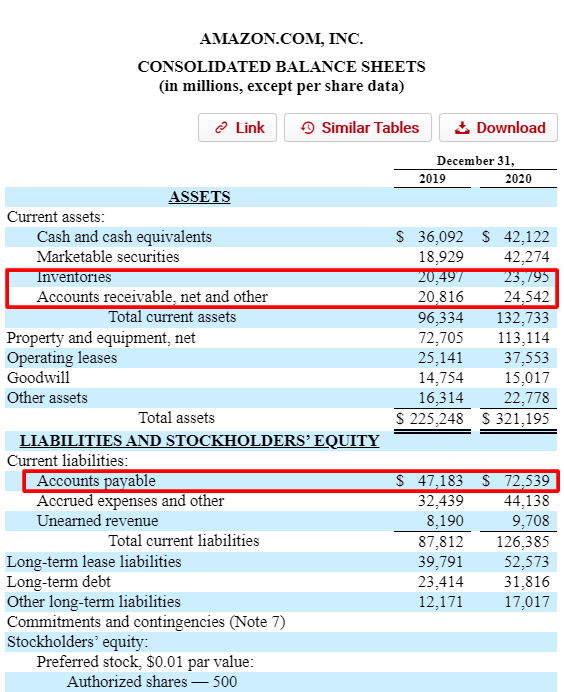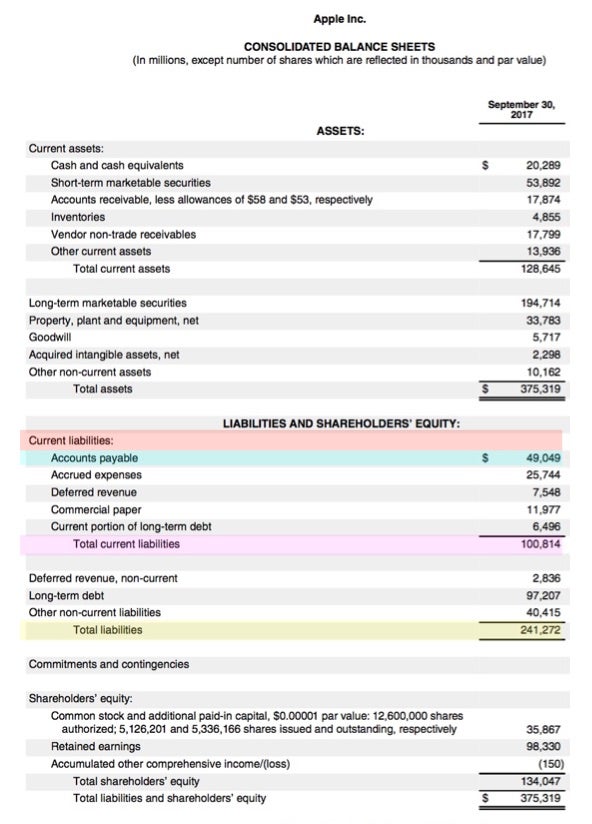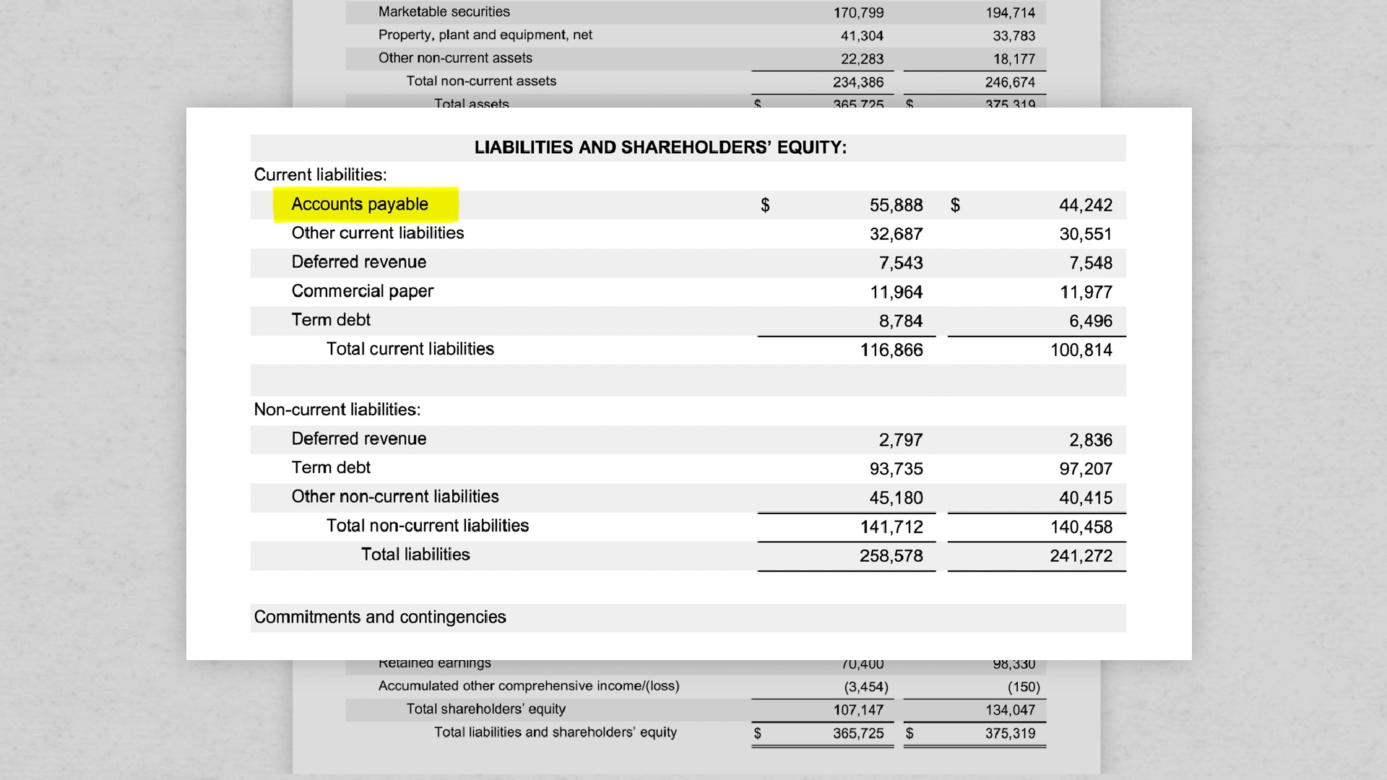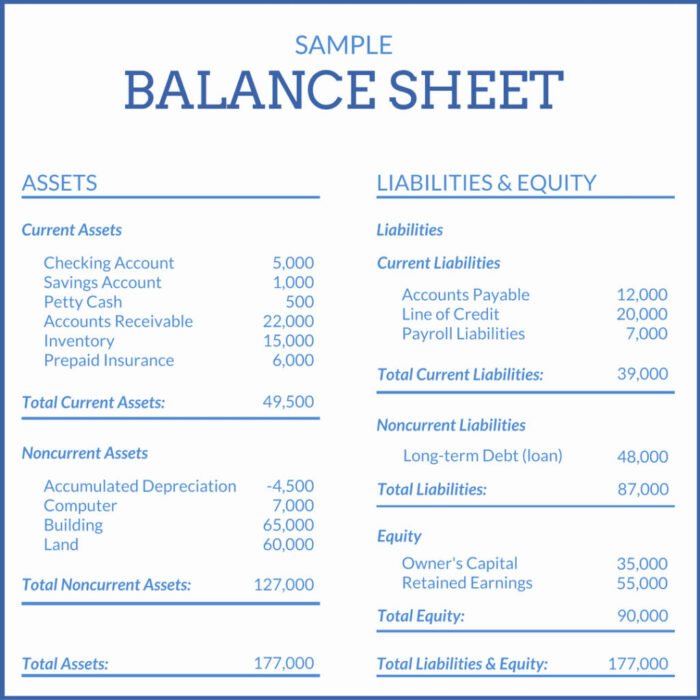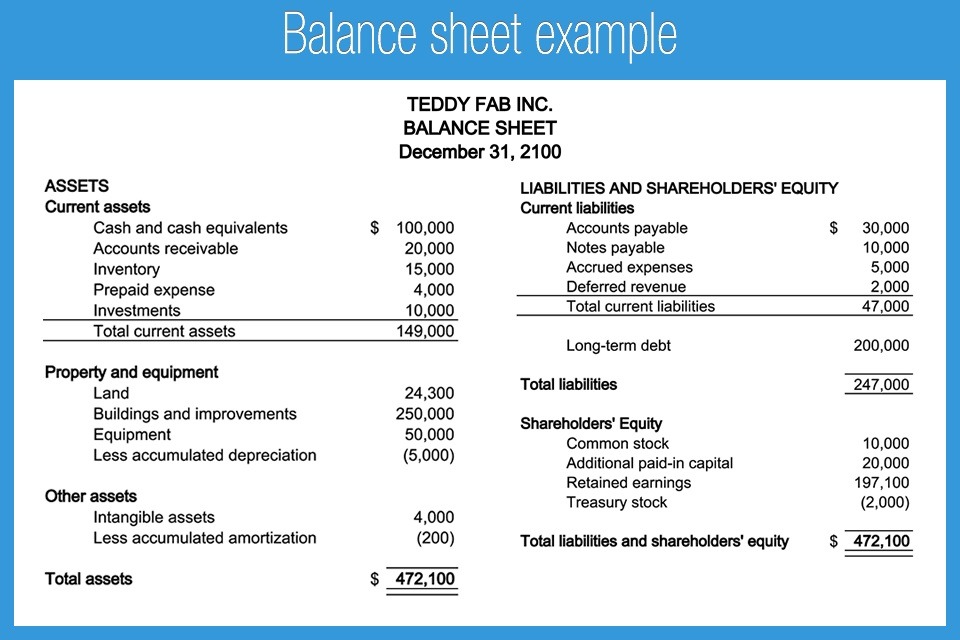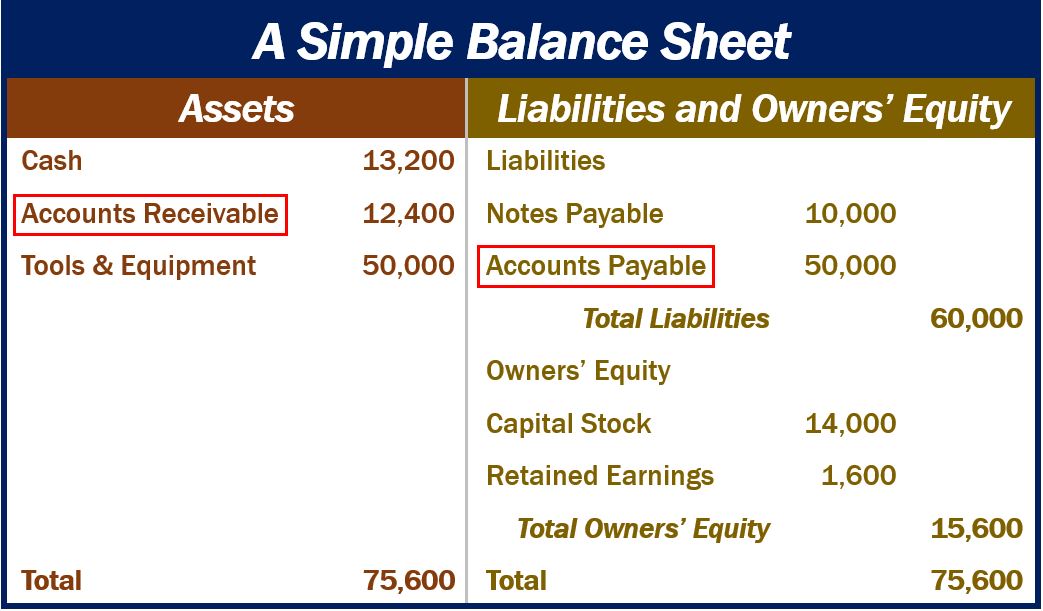Does Accounts Payable Go On The Balance Sheet
Does Accounts Payable Go On The Balance Sheet - Web by pradeepa h january 19, 2021 21 min read in this article, you will learn: Web the balance sheet is just a more detailed version of the fundamental accounting equation—also known as the balance sheet formula—which includes assets, liabilities, and shareholders’. What is the accounts payable process? Accounts payable is a liability since it is money owed to creditors and is listed under current liabilities on the balance. The sum of all outstanding amounts owed to vendors is shown as the. Web accounts payable (ap) are amounts due to vendors or suppliers for goods or services received that have not yet been paid for. Web accounts payable is listed on a company's balance sheet. The main difference between accounts payable and expenses is how they are recorded on a company’s financial statements. Accounts payable appear on the balance sheet, while. What is the role of accounts payable?
The main difference between accounts payable and expenses is how they are recorded on a company’s financial statements. What is the accounts payable process? Accounts payable is a liability since it is money owed to creditors and is listed under current liabilities on the balance. Web the balance sheet is just a more detailed version of the fundamental accounting equation—also known as the balance sheet formula—which includes assets, liabilities, and shareholders’. Accounts payable appear on the balance sheet, while. Web accounts payable is listed on a company's balance sheet. What is the role of accounts payable? Web accounts payable (ap) are amounts due to vendors or suppliers for goods or services received that have not yet been paid for. The sum of all outstanding amounts owed to vendors is shown as the. Web by pradeepa h january 19, 2021 21 min read in this article, you will learn:
Web accounts payable is listed on a company's balance sheet. Web accounts payable (ap) are amounts due to vendors or suppliers for goods or services received that have not yet been paid for. Accounts payable appear on the balance sheet, while. The main difference between accounts payable and expenses is how they are recorded on a company’s financial statements. What is the accounts payable process? The sum of all outstanding amounts owed to vendors is shown as the. Web by pradeepa h january 19, 2021 21 min read in this article, you will learn: Accounts payable is a liability since it is money owed to creditors and is listed under current liabilities on the balance. Web the balance sheet is just a more detailed version of the fundamental accounting equation—also known as the balance sheet formula—which includes assets, liabilities, and shareholders’. What is the role of accounts payable?
Loan Balance Sheet
The sum of all outstanding amounts owed to vendors is shown as the. Web accounts payable (ap) are amounts due to vendors or suppliers for goods or services received that have not yet been paid for. What is the accounts payable process? What is the role of accounts payable? Web accounts payable is listed on a company's balance sheet.
¿Cómo se muestran las cuentas por pagar en el balance general
Web the balance sheet is just a more detailed version of the fundamental accounting equation—also known as the balance sheet formula—which includes assets, liabilities, and shareholders’. Web accounts payable (ap) are amounts due to vendors or suppliers for goods or services received that have not yet been paid for. Accounts payable appear on the balance sheet, while. Web accounts payable.
Everything there is to know about accounts payable
Web accounts payable (ap) are amounts due to vendors or suppliers for goods or services received that have not yet been paid for. Accounts payable is a liability since it is money owed to creditors and is listed under current liabilities on the balance. Accounts payable appear on the balance sheet, while. The main difference between accounts payable and expenses.
Accounts Receivable Vs. Accounts Payable and the Working Capital Cycle
Web accounts payable is listed on a company's balance sheet. What is the accounts payable process? Accounts payable is a liability since it is money owed to creditors and is listed under current liabilities on the balance. Web the balance sheet is just a more detailed version of the fundamental accounting equation—also known as the balance sheet formula—which includes assets,.
How do accounts payable show on the balance sheet? شبکه اطلاع رسانی
Web accounts payable is listed on a company's balance sheet. Web accounts payable (ap) are amounts due to vendors or suppliers for goods or services received that have not yet been paid for. The main difference between accounts payable and expenses is how they are recorded on a company’s financial statements. Web by pradeepa h january 19, 2021 21 min.
Favorite Note Payable On Balance Sheet Sba Cash Flow Template
Web accounts payable (ap) are amounts due to vendors or suppliers for goods or services received that have not yet been paid for. Accounts payable appear on the balance sheet, while. Web by pradeepa h january 19, 2021 21 min read in this article, you will learn: Web the balance sheet is just a more detailed version of the fundamental.
Accounts Payable (AP) What They Are and How to Interpret Pareto Labs
Web accounts payable is listed on a company's balance sheet. Web the balance sheet is just a more detailed version of the fundamental accounting equation—also known as the balance sheet formula—which includes assets, liabilities, and shareholders’. Web accounts payable (ap) are amounts due to vendors or suppliers for goods or services received that have not yet been paid for. The.
The Importance of an Accurate Balance Sheet Basis 365 Accounting
Web the balance sheet is just a more detailed version of the fundamental accounting equation—also known as the balance sheet formula—which includes assets, liabilities, and shareholders’. Web accounts payable (ap) are amounts due to vendors or suppliers for goods or services received that have not yet been paid for. What is the role of accounts payable? Accounts payable is a.
BALANCE SHEET Central Africa Tax Guide
Accounts payable is a liability since it is money owed to creditors and is listed under current liabilities on the balance. What is the accounts payable process? Web by pradeepa h january 19, 2021 21 min read in this article, you will learn: The main difference between accounts payable and expenses is how they are recorded on a company’s financial.
GAAP Generally Accepted Accounting Principles
Web by pradeepa h january 19, 2021 21 min read in this article, you will learn: The main difference between accounts payable and expenses is how they are recorded on a company’s financial statements. What is the role of accounts payable? Accounts payable appear on the balance sheet, while. Web accounts payable (ap) are amounts due to vendors or suppliers.
Web By Pradeepa H January 19, 2021 21 Min Read In This Article, You Will Learn:
Web accounts payable is listed on a company's balance sheet. The main difference between accounts payable and expenses is how they are recorded on a company’s financial statements. What is the accounts payable process? Web accounts payable (ap) are amounts due to vendors or suppliers for goods or services received that have not yet been paid for.
Accounts Payable Appear On The Balance Sheet, While.
Accounts payable is a liability since it is money owed to creditors and is listed under current liabilities on the balance. The sum of all outstanding amounts owed to vendors is shown as the. What is the role of accounts payable? Web the balance sheet is just a more detailed version of the fundamental accounting equation—also known as the balance sheet formula—which includes assets, liabilities, and shareholders’.


